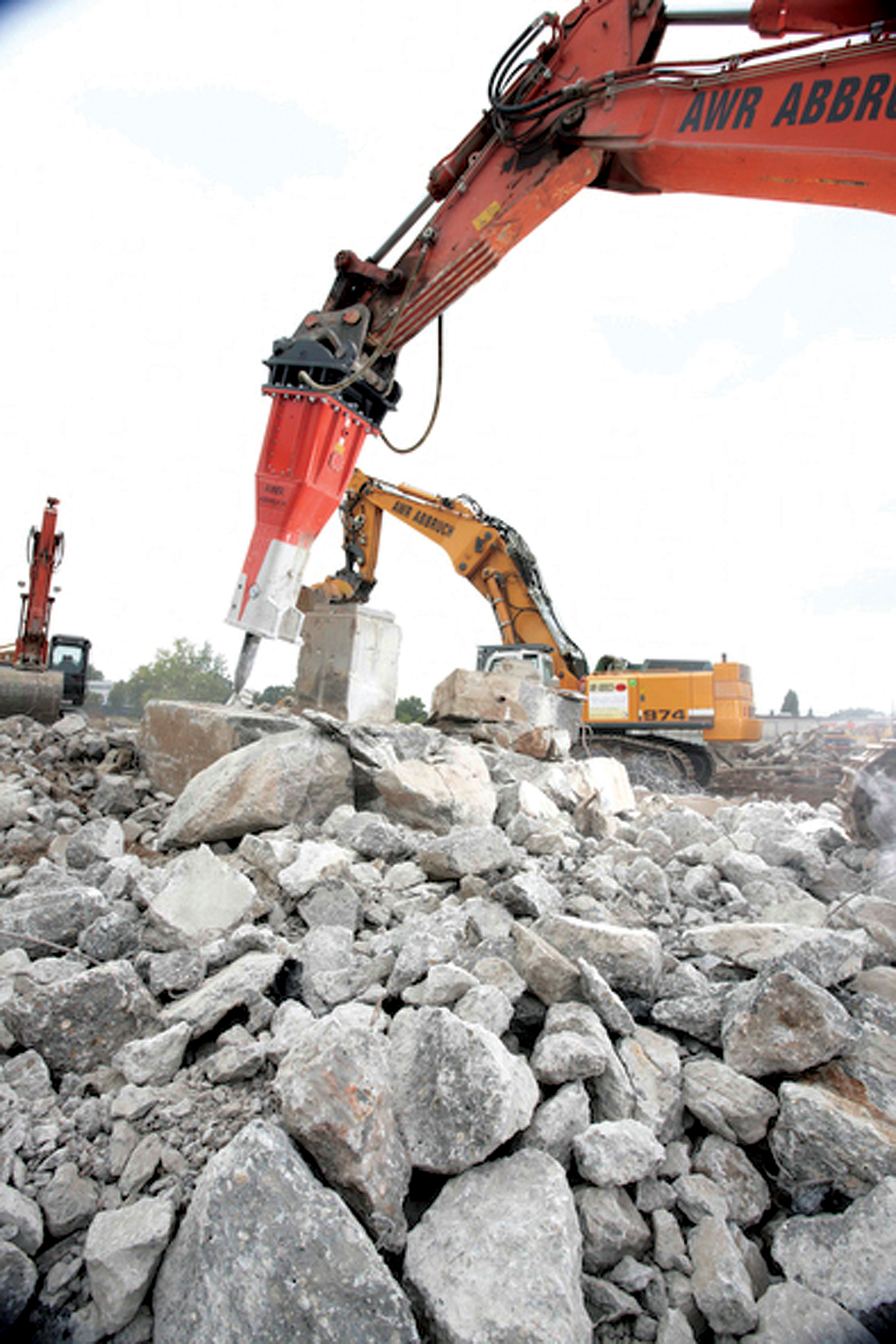
With the need to recycle high on the agenda, finding effective techniques to reuse concrete demolition waste has never been more important
Concrete is the second most consumed material after water, according to the
The organisation is hoping to promote recycling of this widely used material through the recent publication of a new report from its
The new report aims to set out best practise guidelines to maximise reuse and promote more sustainable development. The report sets out to dispel myths and establish true facts about the potential for recycled concrete and looks at options for returned concrete from ready-mixed concrete plants, waste from pre-cast concrete operations and construction and demolition waste.
"Concrete has fairly unique properties and its recovery often falls between standard definitions of reuse and recycling," states the CSI report. "Concrete is broken down into aggregate for use in a new life. This new life is usually road works aggregates, but in some areas it is also used as aggregates in new concrete.
"In some countries near full recovery of concrete is achieved. However, in many parts of the world the potential to recover concrete is overlooked and it ends up as unnecessary waste in landfill. Furthermore, concrete waste statistics are generally difficult to secure. This is partially explained by the relatively low hazard that the waste poses compared with some other materials, resulting in low public concern." The council has said that there are two advantages to concrete recycling - it reduces reliance on virgin aggregates and the environmental cost of extraction and it also reduces landfilling. The need for recycling is highlighted by the global growth in concrete use from 2billion tonnes a year in 1950 to 30billion tonnes in 2006.
The report said, "At present, most recovered concrete is used in road sub-base and civil engineering projects. From a sustainability viewpoint, these low-grade uses currently provide the optimal outcome in most circumstances. With good initial planning and design of buildings, well considered renovation and managed demolition, the recovery and reuse of concrete is achievable and will contribute to sustainable buildings and urban societies of the future."Recycling in action
Breaking down almost a quarter of a million cubic metres of reinforced concrete buildings ready for site redevelopment is a large task but on that AWR Abbruch has recently completed. The company was charged with removing 220,000m3 of concrete structures from the old AGFA factory in Neu-Isenburg, Germany to allow the site to be reused.
AWR invested in a new 7tonne Sandvik BR7013 city hydraulic breaker for the work and so far it has been used to break up a floor an area of 5,000m2, with a thickness of 2.5m. Separation of the concrete from the reinforcing bar was undertaken on site and the concrete was crushed and screened for reuse on other construction projects.















